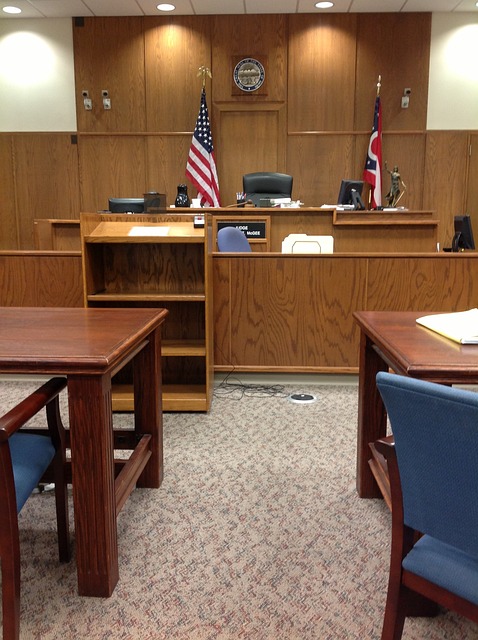Oregon's court system handles contempt cases through structured procedures, ensuring fairness. The process begins with a motion or petition, leading to a hearing where both sides present arguments and evidence. A judge decides if the respondent is in contempt, considering state guidelines. Complex cases may escalate to the Oregon Tax Court or Oregon Supreme Court. Effective legal navigation requires understanding these procedures and meticulous courtroom processes, culminating in post-trial actions guided by experienced legal counsel.
“Explore the intricate workflows within the Oregon court system for contempt cases—a critical aspect of maintaining justice and order. This comprehensive guide delves into the complex yet structured process, from understanding the basics of contempt in Oregon to navigating post-trial appeals.
Learn about the court’s hierarchical structure dedicated to contempt matters, unravel the steps of filing and serving petitions, and discover the nuanced courtroom procedures. Master the art of legal navigation in Oregon, ensuring a thorough grasp of procedural guidelines for a successful outcome.”
- Understanding Contempt Cases in Oregon: An Overview
- The Court System Structure for Contempt Matters
- Filing and Serving Petitions: Initial Steps
- Courtroom Procedures and Hearings
- Post-Trial Actions and Appeals: Navigating the Process
Understanding Contempt Cases in Oregon: An Overview

Contempt cases in Oregon are governed by specific court procedures and guidelines, ensuring a structured legal process. These cases typically arise when an individual fails to comply with a court order, such as failing to pay child support, not adhering to a restraining order, or wilfully obstructing justice. Understanding the courtroom process is crucial for those involved, as it dictates the steps taken by both parties and the court system.
The legal navigation of contempt cases in Oregon involves several key steps. First, the complainant must file a motion with the court, detailing the alleged contemptuous behavior. The court then reviews the evidence and issues a citation or summons to the respondent, requiring their appearance. During the courtroom process, both parties present their arguments and evidence, after which the judge makes a decision, either finding the respondent in contempt or dismissing the charges. Oregon’s procedural guidelines for such cases are designed to ensure fairness and provide clarity for all involved.
The Court System Structure for Contempt Matters

The Oregon court system has a structured approach to handling contempt cases, ensuring a fair and efficient legal process for all involved parties. At the heart of this structure lies a hierarchical system, where different courts preside over various stages of contempt proceedings. Typically, these cases begin in the district or circuit court, which has jurisdiction over many civil and criminal matters, including initial contempt accusations. If the case escalates or involves more complex issues, it may be escalated to the Oregon Tax Court, especially if taxation or property disputes are factors. For the most severe contempt cases, the Oregon Supreme Court serves as the final arbiter, offering a comprehensive legal navigation path through the state’s procedural guidelines.
Understanding this court system workflow is crucial for anyone navigating the legal process in Oregon regarding contempt matters. These procedures ensure that all parties have access to justice and that decisions are made based on established rules and regulations. By adhering to these Oregon court procedures contempt, individuals can expect a transparent and structured courtroom process, enabling them to present their cases effectively within the confines of the law.
Filing and Serving Petitions: Initial Steps

In Oregon, initiating a contempt case involves meticulous legal navigation, beginning with careful filing and serving petitions. The first step is to draft a comprehensive petition detailing the alleged contemptuous acts or omissions. This document should be precise, outlining specific instances where an individual or entity has failed to comply with a court order. Once drafted, the petition is ready for legal service, ensuring it is delivered to the intended party in accordance with Oregon’s procedural guidelines.
Effective courtroom process in contempt cases demands proper documentation and adherence to established Oregon court procedures contempt. The petitioner must provide evidence supporting their claim, such as copies of relevant court orders and any proof of non-compliance. This foundational work is crucial for presenting a strong case and guiding the subsequent courtroom proceedings.
Courtroom Procedures and Hearings

In Oregon, the courtroom procedures for contempt cases are governed by a series of procedural guidelines designed to ensure fairness and order. The process begins with the filing of a motion or petition by the aggrieved party, outlining the alleged contumacious acts. This documentation is then reviewed by a judge who determines whether there is sufficient cause to proceed. If the judge agrees, a hearing is scheduled, providing both parties an opportunity to present their cases. During the hearing, witnesses may be called to testify, and evidence will be scrutinized, allowing for a thorough legal navigation of the contempt allegations.
The courtroom process is structured to facilitate open dialogue and the examination of relevant facts. The judge plays a pivotal role in managing the hearing, ensuring that procedures are followed precisely according to Oregon’s procedural guidelines for contempt cases. This meticulous approach underscores the court system’s commitment to justice and due process within the state of Oregon.
Post-Trial Actions and Appeals: Navigating the Process

After a trial in an Oregon contempt case, the court will issue a ruling, which may result in various post-trial actions. Depending on the outcome, one or both parties may have grounds for appeal. If the decision is in favor of the plaintiff, the court may order the contemner to comply with specific terms, pay fines, or serve additional penalties. In such cases, the aggrieved party should promptly review the ruling and consider all available options.
For instance, if the defendant was found guilty of contempt but believes there were procedural errors, they might opt for an appeal. Navigating the legal process in Oregon requires a thorough understanding of the state’s court procedures and contempt guidelines. Consulting with a legal professional experienced in Oregon court system practices is crucial to ensure proper handling of post-trial actions and appeals related to contempt cases.






